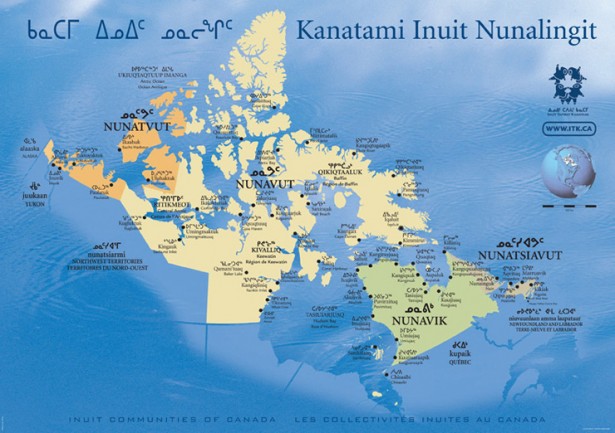
In Arctic Canada, climate change is vaporizing vast expanses of snow and ice. Northern Native peoples depend on these frozen vistas to support the animals and marine creatures that define the traditional Inuit way of life. But given the regions’ remoteness, what could replace that life?
This was one of several questions about key Inuit issues that Inuit Tapiriit Kanatami (ITK), the advocacy group for Canada’s Inuit population, asked the five parties vying in the May 2 election. All but the Conservatives had responded by late April. Still, ITK President Mary Simon was not impressed with those who did. “Each of you has much work to do in confronting and addressing the realities of Canada’s remote Arctic communities,” she blogged in “An Open Letter to the Party Leaders.”
Climate change in particular was a poser for all groups, including the Green Party. Responses entailed vague promises of funding and an acknowledgement that northern Canadians are at the forefront of climate change effects.
Topping the list of concerns was the housing shortage. “In Canada, Inuit are the most likely to live in crowded homes,” ITK said. “What would your party do to address the housing crisis in Inuit communities?”
The Bloc Québécois said it would push for an increase equivalent to one percent of the federal annual revenues to the global housing annual budget. The Liberal Party of Canada promised to increase federal investment in affordable housing by $550 million in its first two years to “reduce homelessness, maintain and renew existing affordable housing stock, and stimulate new construction of affordable housing.”
For its part, the socialist-leaning New Democratic Party (NDP) promised to improve infrastructure in general and commit $800 million in new funding for affordable and social housing. The Green Party said it would spend $2.4 billion over the next three years to improve aboriginal housing, education and water, and would work with Inuit leaders. The Greens also pledged to invest $2.5 billion more to create a national affordable housing program.
To combat tuberculosis, the Liberals pledged to attract health care workers to underserved areas with such incentives as student loan forgiveness, and to invest $40 million over two years to improve rural health service. The NDP supported access to health care for all aboriginals.
View all the questions and answers here.
© 1998 - 2011 Indian Country Today. All Rights Reserved To subscribe or visit go to: http://www.indiancountry.com